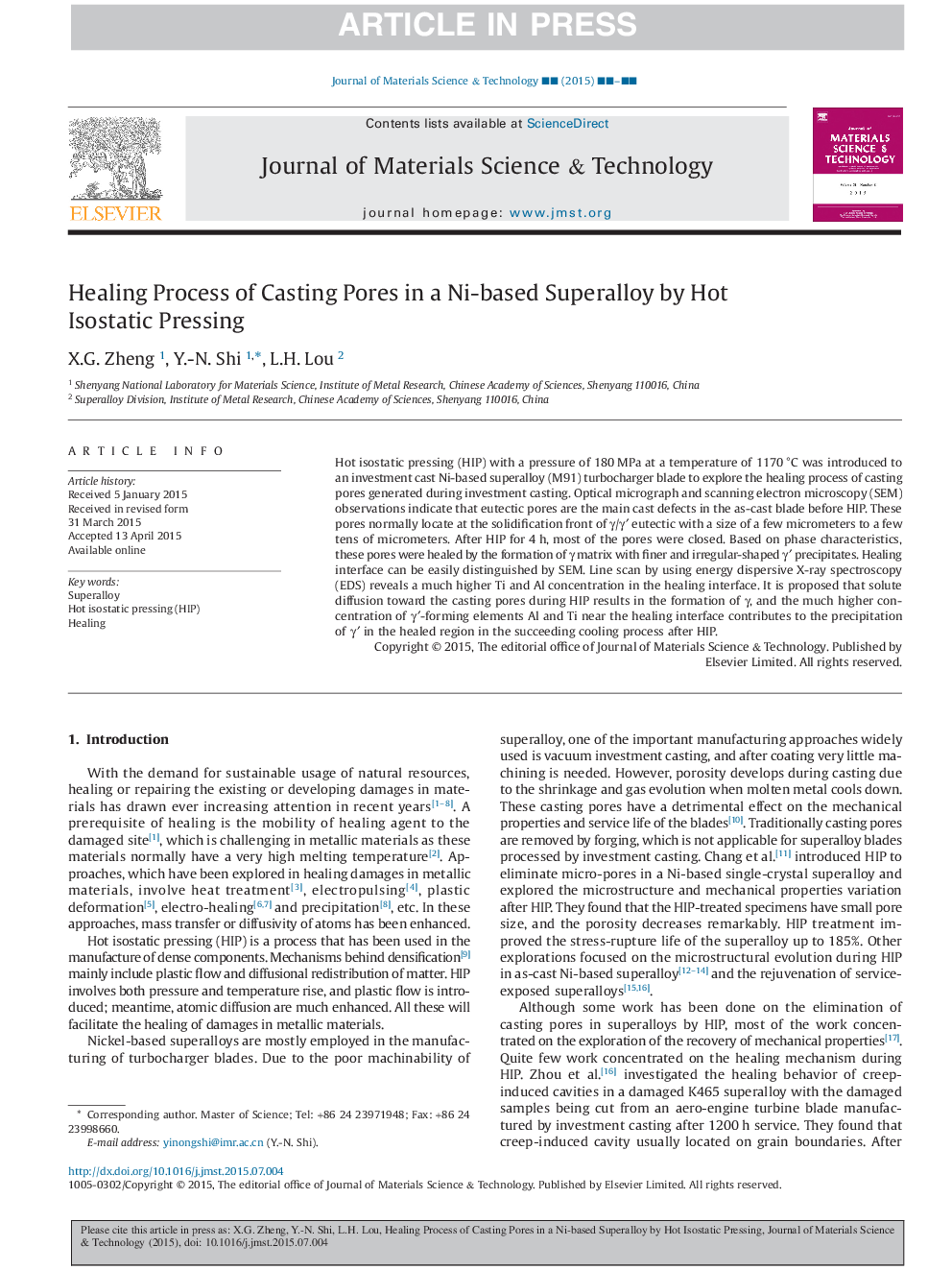| Article ID | Journal | Published Year | Pages | File Type |
|---|---|---|---|---|
| 1555804 | Journal of Materials Science & Technology | 2015 | 7 Pages |
Abstract
Hot isostatic pressing (HIP) with a pressure of 180âMPa at a temperature of 1170â°C was introduced to an investment cast Ni-based superalloy (M91) turbocharger blade to explore the healing process of casting pores generated during investment casting. Optical micrograph and scanning electron microscopy (SEM) observations indicate that eutectic pores are the main cast defects in the as-cast blade before HIP. These pores normally locate at the solidification front of γ/γⲠeutectic with a size of a few micrometers to a few tens of micrometers. After HIP for 4âh, most of the pores were closed. Based on phase characteristics, these pores were healed by the formation of γ matrix with finer and irregular-shaped γⲠprecipitates. Healing interface can be easily distinguished by SEM. Line scan by using energy dispersive X-ray spectroscopy (EDS) reveals a much higher Ti and Al concentration in the healing interface. It is proposed that solute diffusion toward the casting pores during HIP results in the formation of γ, and the much higher concentration of γâ²-forming elements Al and Ti near the healing interface contributes to the precipitation of γⲠin the healed region in the succeeding cooling process after HIP.
Related Topics
Physical Sciences and Engineering
Materials Science
Materials Chemistry
Authors
X.G. Zheng, Y.-N. Shi, L.H. Lou,
